TechRadar Verdict
A terrific-sounding soundbar plus subwoofer combination, serving up crystal clear vocals and low, rumbling bass that belies its size. The Samsung HW-Q700C ultimately does more than enough to elevate your home cinema experience, but you can pick up an even better Samsung soundbar for not a lot more money.
Pros
- +
Vocal clarity
- +
Upgradeable to full surround sound
- +
Superb power
Cons
- -
No 4K/120Hz passthrough
- -
Can be susceptible to connectivity issues
- -
Sound calibration needs a Samsung TV
Why you can trust TechRadar
Samsung HW-Q700C: Two-minute review
In a bid to become one of the best Dolby Atmos soundbars to have graced our testing process, the Samsung HW-Q700C presents itself as a similar TV-boosting soundbar solution as the HW-Q800C. Essentially, it too is a mid-tier offering capable of pumping out Dolby Atmos from a single bar and subwoofer combination. Like its slightly bigger brother, there are no rear speakers, nor do you get the truly insane levels of power exhibited by the top-of-the-range HW-Q990C. Differentiating it from the 800C, the Q700C on test here adopts a 3.1.2-channel output – compared to the 5.1.2 layout of the 800 – making it a good option for those wanting to boost the sound coming from their TV in a smaller-sized room. And, as with all Samsung soundbars, you can take advantage of extra features if you own a compatible Samsung TV such as Q Symphony, which is explained in greater detail further down.
At $549.99 / £599 / AU$899 – although you can regularly find it for less in all territories – it’s what could be deemed affordable, and while some may wish they had the extra couple of channels found on the 800C, the 700C delivers a loud, dynamic and impressive performance – particularly where vocals are concerned. If you want those extra channels and a more authentic Dolby Atmos surround sound experience at a later date, you could wirelessly connect the SWA-9500S speakers for $299 / £249 / AU$349.
The Samsung HW-Q700C supports Dolby Atmos and DTS:X by way of two up-firing drivers to deliver the all-important height effects, and it will happily double up as a music system, accepting a range of music files including high-resolution FLAC. In practice, it is a formidable bit of kit, and certainly passes the test when it comes to the task of boosting your TV’s sound and bringing a cinema-like experience into your main room. Bass levels are insanely good considering the size of the 'bar and sub, Dolby Atmos height effects are convincing – as much as they can be given the speaker configuration – and as already alluded to, vocals are crystal clear.
However, considering you don’t need to spend a lot more money to pick up the HW-Q800C, it does beg the question who would take the 700 instead. This review intends to answer that one for you.
Samsung HW-Q700C Review: Price & Availaibility
- $549.99 / £599 / AU$899
- Released April 2023
The Samsung HW-Q700C received a global launch in April 2023. In the UK and Australia, it appears to have maintained its original launch price of £599 and AU$899, whereas in the US, it’s undergone a price cut from $699.99, down to $549.99, at the time of writing.
However, this is only the MSRP, and you’ll likely find it’s been discounted a fair amount at many third-party retailers, making it seemingly better value for money. But you’re also going to find the slightly more powerful Q800C has been discounted too, and so if you can afford the extra spend, that would ultimately be our recommendation.
This is because the Q800C gives you a couple of extra speaker drivers for a bigger, wider sound. An alternative would be to use the money saved by buying the Q700C and spending it on the optional rear speakers for a more authentic 5.1.2 surround sound setup.
Sign up for breaking news, reviews, opinion, top tech deals, and more.
Samsung HW-Q700C Review: Specs
| Dimensions | Soundbar: 1182 x 468 x 272 mm ; Subwoofer: 205.0 x 353.0 x 302.0 mm |
| Speaker channels | 3.1.2 |
| Connections | 1 x HDMI input, 1 x HDMI eARC support, digital optical, Wi-Fi, Bluetooth |
| Dolby Atmos/DTS:X | Yes/Yes |
| Sub included | Yes |
| Rear speakers included | No |
| Features | Q Symphony, SpaceFit Sound, Hi-Res Audio Decoding, LED display, 4K HDR10+, Dolby Vision passthrough |
Samsung HW-Q700C Review: Features
- 3.1.2 channels
- 4K HDR HDMI passthrough
- Exclusive features for Samsung TV owners
The Samsung HW-Q700C’s 3.1.2 channel arrangement comprises a center, two wide-range tweeters, two dedicated upward firing drivers and a wireless 6.5-inch subwoofer, delivering a total power output of 320 watts. This is another area where the Q700C differs from its higher-specced siblings. The Q800C and Q990C are paired with an 8-inch subwoofer, which is capable of making your room shake even more with low frequencies. A larger sub is going to be useful in larger rooms and consequently, could be overkill if your living room, bedroom, media room, whatever it may be, is on the smaller side. The 6.5-inch sub included with the 700C is still plenty capable, it must be said, and in my time using it I didn’t feel short changed.
If you’re in ownership of a compatible Samsung TV, you can effectively increase the channel count by way of integrating the TV’s speakers into the equation via Q Symphony. The aim is to create a bigger, more detailed soundstage, since you’ll be using all available speakers. If you are able to connect to a compatible Samsung TV – 2021 - 2023 QLED Q70 TVs and above – then you can take advantage of SpaceFit Sound room calibration. This uses the microphone in the TV to automatically calibrate the sound without any user intervention. SpaceFit Sound Pro, which doesn't require a Samsung TV to be connected, is available on the Q800C soundbar and the flagship Q990C.
The vast majority of audio formats are supported, including the aforementioned Dolby Atmos, alongside DTS:X, Dolby Digital Plus and Dolby True HD. As for music, there’s across the board support for AAC, WAV, FLAC, MP3 and ALAC. Put simply, the Samsung HW-Q700C will be able to playback virtually anything you wish to throw at it.
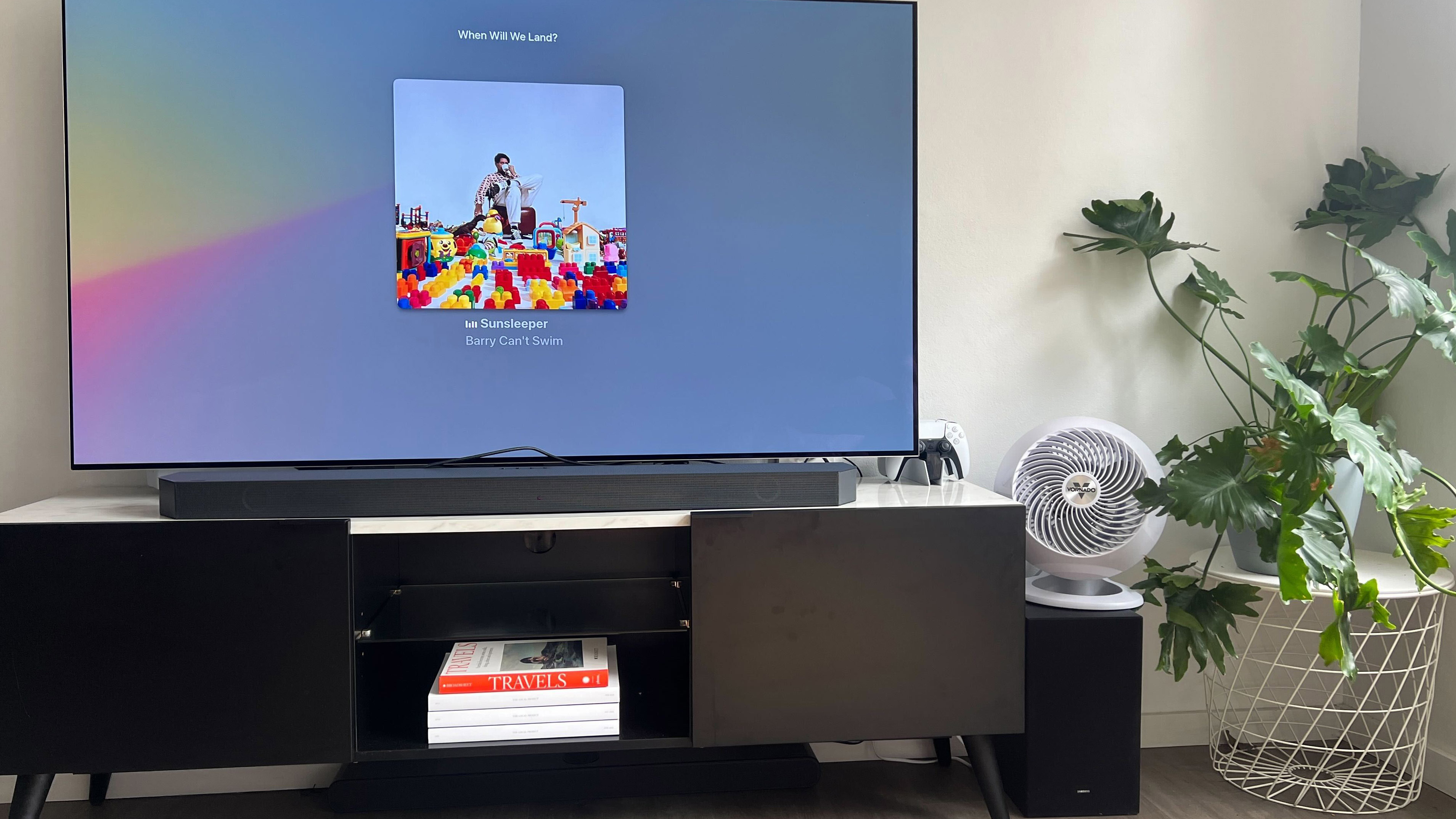
And since there’s Wi-Fi onboard, you can also play music via Spotify Connect, Apple AirPlay 2 and Tidal Connect. Amazon Alexa is also supported, although it’s not completely built in. You’ll need a separate Alexa device, such as an Echo, through which you can bark commands, such as asking the soundbar to skip a music track or adjust the volume.
Further proving the fact that it’s the physical features that separate the Q700C from other Q-series soundbars, Samsung has given its mid-range soundbar its full suite of audio technologies. These include Adaptive Sound 2.0, which claims to intelligently analyze the content you’re watching, whether it be sports, a movie or the news, and adjust the audio output accordingly.
There’s a separate audio mode for gamers, in the form of Game Made Pro, which aims to more accurately place various sounds, such as another player coming from behind you. Do note that the Samsung HW-Q700C doesn’t support 4K 120Hz pass through. It will support 4K pass through, but if you want to make the absolute most of your next-gen console, you’ll need to plug the console directly into your TV and send audio to the soundbar via eARC.
- Features score: 4.5/5
Samsung HW-Q700C Review: Audio Performance
- Surprisingly deep bass from the wireless subwoofer
- Vocal clarity a particular highlight
- Impressive, if not totally authentic, Dolby Atmos effect
The Samsung HW-Q700C took the place of the more powerful and much more expensive JBL Bar 1300 in my living room. The JBL does have genuine rear speakers, therefore capable of delivering a more authentic Dolby Atmos experience, so I was keen to hear how Samsung’s single-bar solution would fare. Truth be told, I was impressed.
To get things started, I fired up a stream of Lightyear on Disney Plus, and the opening scene alone proved the HW-Q700C could deliver power that belies its size. Buzz’s rocket ship blasted through space with ferocity, and the subwoofer provided plenty of low end rumble to highlight just how powerful the ship’s jet propulsion was. So much low end rumble in fact, that I felt compelled to turn the volume down a few notches, not just so as to not annoy my housemate, but the neighbors in the units above and below me.

The bar itself also impressed. What was immediately apparent – positively for Samsung and negatively for JBL – was how much clearer dialogue was. No matter the movie or TV show, I never once felt the need to make a beeline for the subtitles menu, as voices came through with impressive clarity. I toggled the voice enhance feature on and off too, to hear if it made dialogue any clearer and sure enough, it did. I did find the rest of the audio presentation took a slight backseat when this feature was turned on however, so for the most part I had it turned off.
As for Dolby Atmos effects, it’s a mixed bag. Yes, the Samsung HW-Q700C soundbar did indeed fill my room with sound that evidently had greater height, and during Avengers: Endgame in the main, epic battle at the end, sounds of various spaceships and otherworldly beasts flying in from the sides of the screen did sound as they had come from my side or behind me. But when compared to a soundbar with dedicated rear speakers, or a fully-fledged home cinema speaker system, there is a noticeable difference.
But, this should pretty much be expected. The HW-Q700C doesn’t have physical rear speakers and so placing the responsibility of enveloping a room with sound on the 2 upward firing drivers is going to be a big ask. I would say there is a slight sensation of a half-dome of sound, because you’re definitely getting a larger soundfield than you’d get from a front-firing-only soundbar, but not quite a full dome over your head.
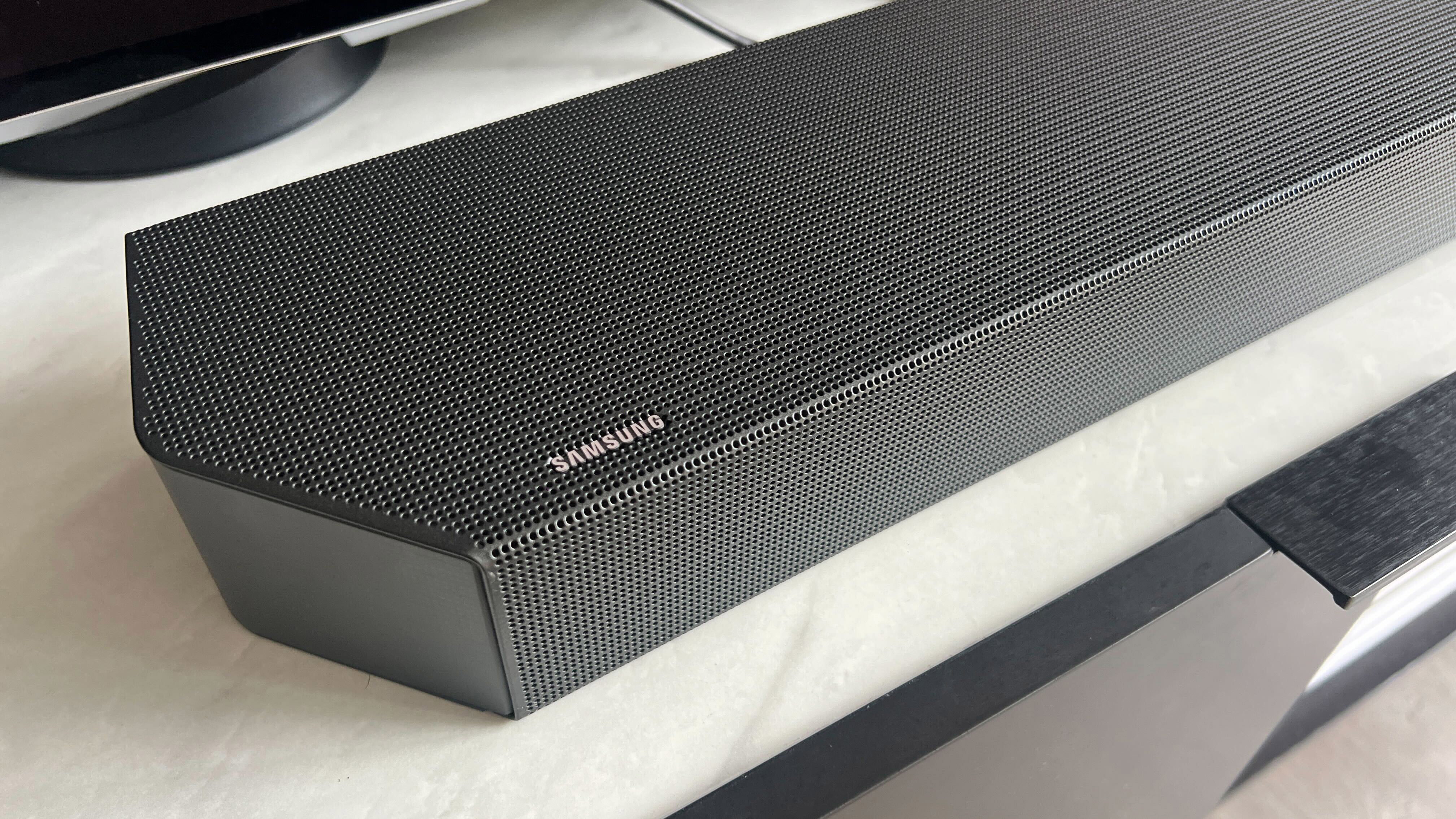
This is realistically only a minor setback as on the whole, I was seriously impressed with the audio performance of the Q700C. It had no issues filling the room with sound, and I had the volume relatively low during the entirety of the review period. I did turn things up on a couple of occasions to see what it was truly capable of, and once again I was taken aback by the sheer power of the unassuming bar and sub package.
Musically, it’s a good performer too, although I found it wasn’t without its issues. First and foremost, I wasn’t able to stream music from my iPhone or Macbook via Apple AirPlay. AirPlay recognised the soundbar as a device, it just wasn’t able to connect. I removed the Q700C from the SmartThings app (and subsequently my wi-fi network) and added it back in to try and remedy the problem, but to no avail.
So, to play music, I streamed tracks from Apple Music via a connected Apple TV. I first loaded up the rather funky, foot-tapping first album from Barry Can’t Swim, which streams in Dolby Atmos. The same effortless room-filling sound experienced with movies carries over here, and also allows the Q700C to prove its rhythmic prowess. I also noticed the soundbar and sub integrated well with each other, ensuring cohesive playback that never once sounded muddled.
Step down to ‘regular’ music playback for songs not available in Dolby Atmos or Spatial Audio and naturally, that height is removed. The Q700C still handles music well mind you, and I’d say it’s pretty much on par with its Q800C sibling when you activate Adaptive Sound Mode. This essentially remixes stereo into multi-channel, and the effect in this instance is as it is with the Q800C. That being, songs are given extra room without sacrificing too much in the way of detail.

- Sound quality score: 4.5/5
Samsung HW-Q700C Review: Design
- Gray plastic finish looks more premium than it feels
- Subwoofer isn't the most attractive thing ever
- Unobtrusive size will suit most TVs
The Samsung HW-Q700C follows a very similar design language to Samsung’s other Q-series soundbars. Namely, a main bar with angled edges, a gray metallic plastic finish complete with front grille and unobtrusive dimensions that make it easy to nestle in front of and underneath a TV. It’s the same width and depth as the Q800C, yet ever so slightly shorter in height, which only adds to its unobtrusive nature.
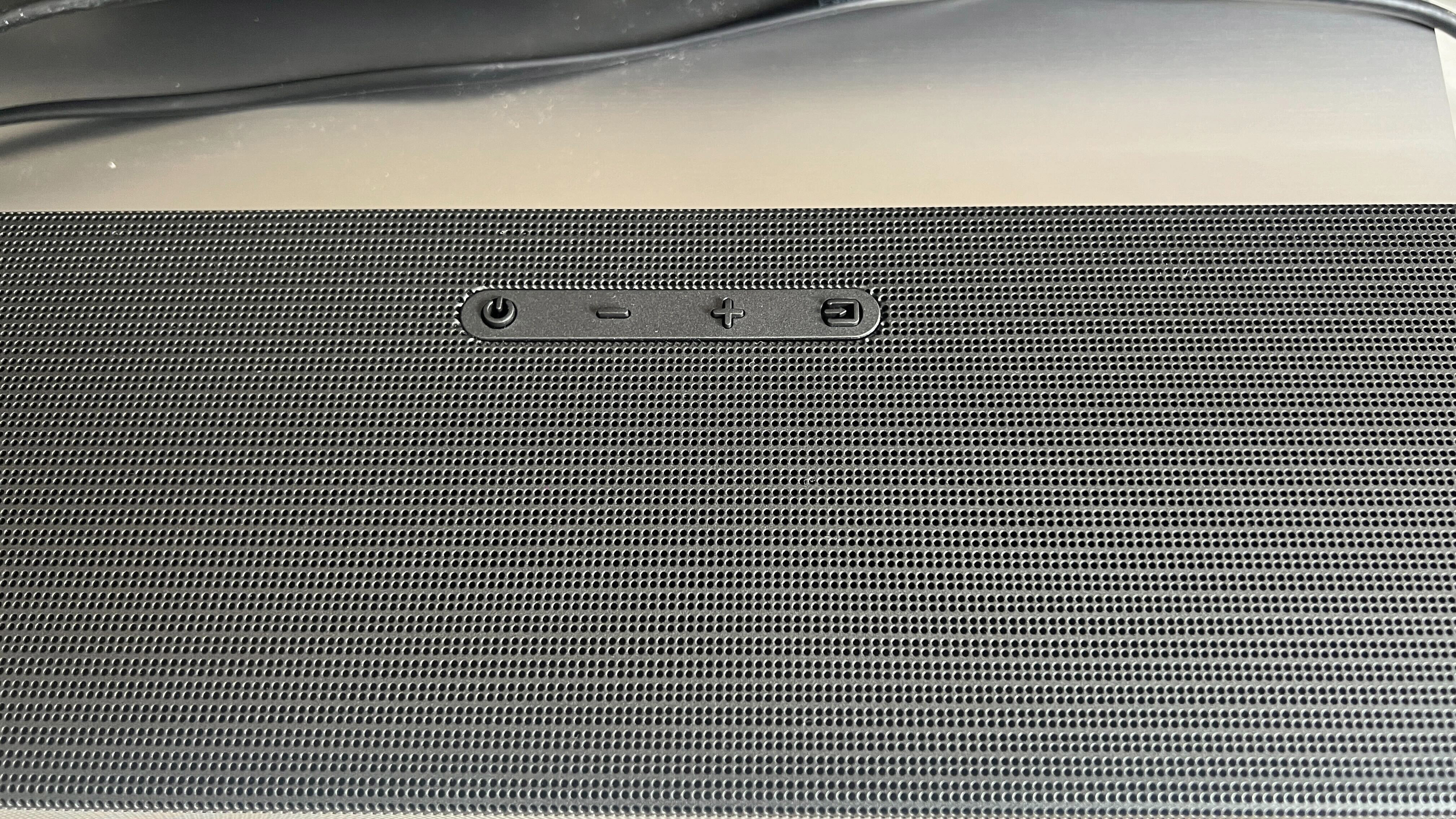
It’s the perfect width for TVs 55-inches in size and greater – I was testing with it placed beneath a 65-inch LG OLED G3 – and since the top panel is covered by a perforated grille, you needn’t worry about any reflections from the screen above it, which is a good thing. There’s also a small LCD display on the right side of the bar (when you’re looking at it) that will display the source – eARC, Wi-Fi, Bluetooth etc – and it will flash up when it’s playing a Dolby Atmos soundtrack, which provides peace of mind for the user.
On the underside of the soundbar are two recessed areas. One is solely for the power cable, while the other is where you’ll plug your HDMI cables and/or digital optical cable. One thing I have noticed is that this layout is best suited to Samsung’s own TVs, as the main bulk of connections can be found on the left of a Samsung TV (when viewed from the back) and so connecting an HDMI cable from this side of the screen to the left side of the soundbar (also when viewed from the rear) will be simple. On my LG TV, however, the HDMI inputs are on the opposite side, meaning I had to really stretch the cables as far as they’d go.
This may not be a huge deal breaker for many, but is something you might not initially consider when buying a soundbar.
The subwoofer I’m less enthusiastic about. It’s rather dinky and so won’t exactly be an eyesore in your room, but I’m not all that keen on the cloth cover on the front. In comparison to the main bar, I feel it makes it look dated. I would’ve been able to tolerate the cloth grille if it were removable, but alas, no such luck.

- Design score: 4/5
Samsung HW-Q700C Review: Setup & Usability
- Controlled via app or remote
- A few issues streaming via AirPlay
I definitely expected the setup of the Samsung HW-Q700C to go off without a hitch, but I did run into a few teething problems. Firstly, the aforementioned issue of input placement meant I had to move a few things around – as a sidenote, my usual JBL Bar 1300 has its inputs in the center of the bar, which I find to be far more logical.
I also, naively, didn’t realise there was just a single HDMI input alongside the HDMI eARC port. So, again, I had to then plug devices into my TV to have the audio sent back down to the soundbar. Once this was all done, I expected them all to work harmoniously, in the sense of, when I turned my Apple TV on, the TV and soundbar should have come on at the same time. Only this didn’t happen… initially at least. I came home one day, about a week after having it all plugged in, to find that this was all now working as it should, without any intervention from myself. Perhaps my housemate is a secret technological guru.
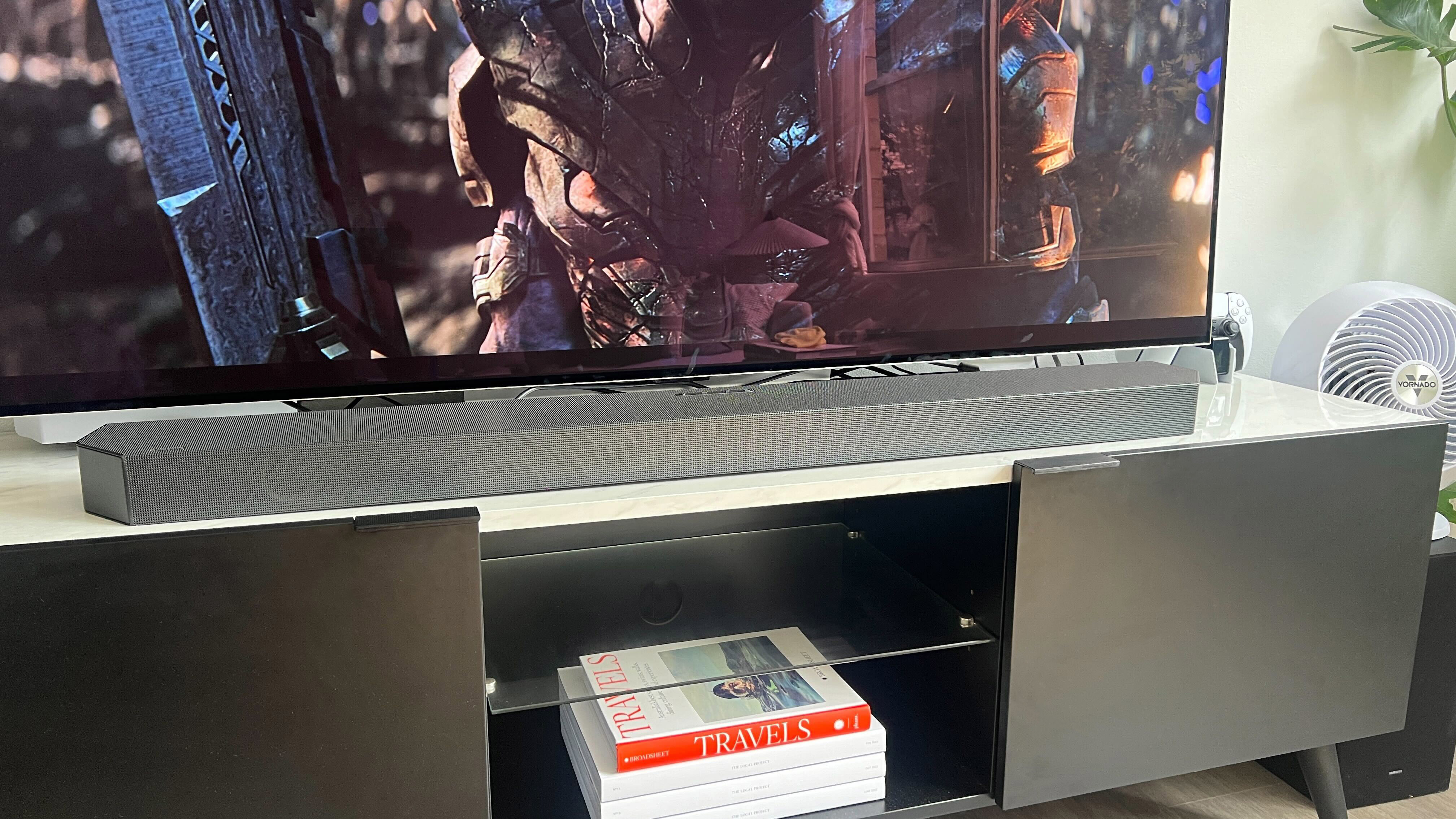
I was also directed to Samsung’s SmartThings app, which mimics the soundbar’s remote control – and is also where you can group other SmartThings compatible devices you may have in your home. The initial setup of this was relatively plain sailing. It detected the Q700C was in my room, and I was able to enter my Wi-Fi password and get it on my network in next to no time.
But a few days later I went to open the app to adjust some settings, and it either kept showing me the spinning loading icon while it tried to establish a connection with the soundbar again, or it didn’t connect at all. The app would tell me the soundbar was off, when I was literally sitting in front of it and it was playing a movie.
I occasionally encountered similar issues with my JBL soundbar, in that it would regularly lose its network connection, before reconnecting again automatically. During any downtime, I’m unable to use that bar’s companion app to make any changes, either. I’m willing to accept that I just have bad luck.
But more recently when I’ve used the Q700C, I’ve had no issues at all. I did find adjusting the volume using my Apple TV remote did suffer from slight input lag, but using the included Samsung remote worked perfectly.
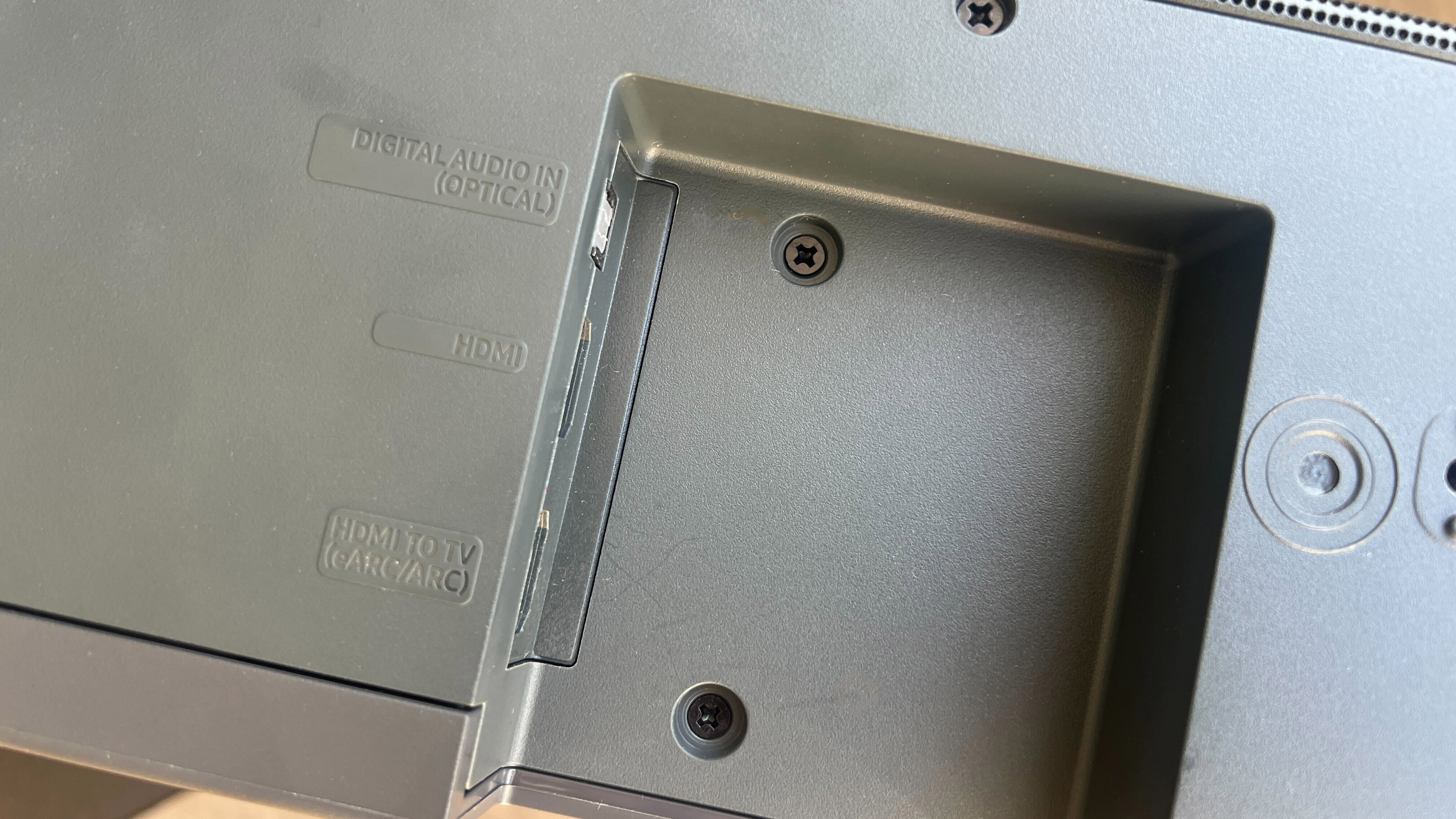
- Setup & usability score: 4/5
Samsung HW-Q700C Review: Value
- The punchier Q800C doesn't cost much more
- Optional rear speakers could be beneficial, but cost extra
The Samsung HW-Q700C is an interesting proposition. On the one hand it’s a relatively inexpensive soundbar (it’s available for much less than its MSRP in most territories) that certainly ticks the box of “boost TV sound”. But the ever-so-slightly better-specced 800C, which we deemed to be the best mid-range soundbar released in 2023, is hanging over it like a fantastic-sounding bad smell. And you don’t need to spend an awful lot more money at some retailers to take ownership of the more powerful sibling.
So, which should you get?
In my opinion, if you only have space for a single soundbar and subwoofer combo – and can stretch your budget – I would opt for the Samsung HW-Q800C for its extra couple of drivers. But if your room layout allows for it, I would argue the HW-Q700C plus the optional rear surround speaker units would create a far more convincing Dolby Atmos soundfield in your room.
If your budget is constrained, however, but still want to make it go as far as possible, then the Samsung HW-Q700C as a standalone unit is still an utter joy to listen to.
- Value score: 4/5
Should I buy the Samsung HW-Q700C?
| Section | Notes | Score |
|---|---|---|
| Features | Incredibly well-equipped, but some users may long for 4K 120Hz pass through. | 4.5/5 |
| Audio performance | Sensational power, just don't expect a fully authentic Atmos experience. | 4.5/5 |
| Design | Unobtrusive and smart design compared to other black oblong bars, subwoofer is easy to tuck away. | 4/5 |
| Setup & usability | Didn't always play ball with the companion app, but on the whole, simple to plug 'n' play. | 4/5 |
| Value | Terrific performance on the whole for the money, but better-specced models don't cost much more. | 4/5 |
Buy it if...
You want an affordable route to great home cinema
The Q700C delivers a performance that belies its size and spec sheet, and it doesn't cost a whole lotta money.
You own a compatible Samsung TV
While all TV owners can use the Q700C, owners of recent Samsung TVs will find more to love thanks to Q Symphony and more logical cable management.
Don't buy it if...
You can afford the Q800C
The Samsung HW-800C doesn't cost that much more, and would be our top pick in the mid-range soundbar space.
You want more authentic Atmos
The Q700C does a good job of creating extra height, but for genuine surround sound you'll want to find a soundbar with rear speakers.
Samsung HW-Q700C review: Also consider

Samsung HW-Q800C
We've mentioned it a lot in this review for good reason. The Q800C is a truly exceptional soundbar that takes everything that's good in the Q700C, but adds more power, more channels and a bigger subwoofer, resulting in an even more impressive home cinema experience.
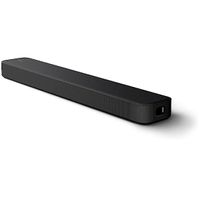
Sony HT-S2000
Our current top budget soundbar pick, this Sony soundbar may lose out on a separate subwoofer and upward firing drivers, but Sony's audio processing tech still enables it to support Dolby Atmos soundtracks.
How I tested the Samsung HW-Q700C
- Tested over two weeks
- Tested with movie and TV content streamed from Apple TV and built-in TV apps
- Music streamed via Bluetooth and from Apple TV
The Samsung HW-Q700C soundbar sat beneath a 65-inch LG G3 OLED TV on an entertainment unit, which is placed along a wall in a central position, as opposed to being in a corner. This allows the wide-angle tweeters to have space to deliver their sound. I left the subwoofer placed alongside the same wall, to the right of the soundbar when viewed from the front. I wasn't able to test the Q700C with the optional rear speakers.
The majority of Dolby Atmos and 5.1 content came from movies and TV shows streamed on Netflix and Disney Plus via an Apple TV 4K. In particular Lightyear, Avengers: End Game and Money Heist.
For music playback, I mainly streamed tracks from Apple Music via the same Apple TV 4K. I also streamed some songs via Bluetooth from my iPhone 13 Pro.
- Read TechRadar's review guarantee
- First reviewed December 2023

Max is a senior staff writer for TechRadar who covers home entertainment and audio first, NBN second and virtually anything else that falls under the consumer electronics umbrella third. He's also a bit of an ecommerce fiend, particularly when it comes to finding the latest coupon codes for a variety of publications. He has written for TechRadar's sister publication What Hi-Fi? as well as Pocket-lint, and he's also the editor of Australian Hi-Fi and Audio Esoterica magazines. Max also dabbled in the men's lifestyle publication space, but is now firmly rooted in his first passion of technology.
